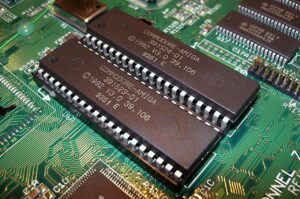What is RAM?

RAM is an acronym that stands for Random Access Memory, and it’s the second most vital storage item available on your computer after your disk drive .
RAM monitors your CPU in real time and actively stores the info and program you’re using, while you’re using it. RAM information are often written, read, and erased over and once again during any session.
Unlike your disk drive , RAM is assessed as volatile memory. this suggests that without access to an influence supply everything stored in RAM are going to be lost. it’s not a permanent storage option, and although it’s much faster than your traditional disk drive , it’s not safe to save lots of critical files or software in RAM as you’ll lose them if you lose power.
Fortunately, people that design modern operating systems on today’s computers understand that RAM are often volatile. There are many built-in security measures that automatically save work to the disk drive to eliminate data loss if your system shuts down automatically.
A good example of those processes is when a document you create in Microsoft Word or Pages performs an automatic backup every jiffy without you wanting to save the file to physically reserve it .
Types of RAM
- SRAM (Static RAM): Stores one little bit of data using the state of a six-transistor memory cell. SRAM is far faster than DRAM but costlier .
- DRAM (Dynamic RAM): It stores bit data employing a pair of transistors and capacitors which structure a DRAM memory cell.
What is ROM (Read-only Memory)?

As the name suggests, ROM is merely useful when the info isn’t dynamic, but it’s a plus over RAM – it’s non-volatile. this suggests that it won’t forget or lose any information if the facility supply is stop , making it an honest choice for things like firmware or other things that rarely get updated but are overlarge . to be stored directly on your disk drive .
Traditionally, ROM data is added when the chip is manufactured and wired. However, ROM has evolved, and there are now options that allow data to be erased and rewritten on the chip. Although it’s not as efficient as RAM, it’s an option.
Types of ROM
- PROM (Programmable Read-only Memory): the data is written after the creation of the memory chip. It’s non-volatile.
- EPROM (Erasable Programmable Read-only Memory): Data on this non-volatile memory chip can be erased by exposing it to high intensity UV light.
- EEPROM (Electrically Erasable Programmable Read-only Memory): Data on this non-volatile memory chip can be electrically erased using on-field electron emission. Modern EEPROMs are quite efficient in terms of read-write capabilities
What is the difference between ROM and RAM?
- The data
RAM data isn’t permanently stored on your system and may be changed indefinitely. you’ll read, write, erase and begin over as repeatedly as you would like . Conversely, ROM data is permanent. Although there are some ways to switch it, these capacities are limited and it can take an extended time to form changes. - Speed
Because the info in RAM isn’t permanent, it’s fast. Much faster than ROM data, which suggests your system is more efficient when using RAM or ROM.
CPU access
One of the explanations RAM is so fast is because your CPU is wired to directly access data stored this manner . an equivalent isn’t true for ROM. To access ROM information, your system will first copy this data to RAM then allow you to read it. - File size and the way much it stores
RAM data takes up tons of space, but it also features a larger capacity. On the opposite hand, RAM takes up less space in terms of size, and also features a lower storage capacity. - Use
RAM is your main memory for temporary files, like your CPU cache or DRAM DIMMs. ROM is most frequently used for things like BIOS or UEFI firmware, RFID tags, medical devices, or microcontrollers. Essentially, wherever alittle but permanent memory storage solution is required . - The cost
Of the 2 ROMs is far and away the cheaper option. thanks to the additional capacity, RAM costs far more to feature to your system.
Table of differences between ROM and RAM
| Topic | ROM | RAM |
|---|---|---|
| Storage capabilities | ROM is non-volatile, not requiring power to store data. | RAM is volatile, requiring power to store data. |
| Uses | ROM is often used to store the BIOS program on a computer motherboard. ROM was used as the storage media in a Nintendo, Gameboy, and Sega Genesis game cartridge. | RAM is used in computers to temporarily store files in use on the computer. |
| Storage capacity | ROM chips often have a storage capacity of 4 to 8 MB. | RAM chips often range in storage capacity from 1 to 256 GB. |
| Physical size | ROM can vary in size from less than an inch in length to multiple inches in length and width, depending on their use. | RAM is available in two primary sizes, whether used in a desktop computer or a laptop. Desktop RAM is about 5 ½ inches in length and 1 inch in width. Laptop RAM is about half the length of desktop RAM. |
Conclusion:
To conclude, you want to remember that in IT there are differing types of knowledge storage, which are used counting on the requirements of the manufacturer or developer
RAM is employed to store data quickly, but temporarily
ROM and its current alternatives (hard drive, SD card, …) are wont to store data more permanently, but it takes longer





hello, your post is so good.Following your articles.
Somebody necessarily assist to make severely posts I would state. This is the first time I frequented your web page and up to now? I amazed with the research you made to make this particular post amazing. Wonderful job!